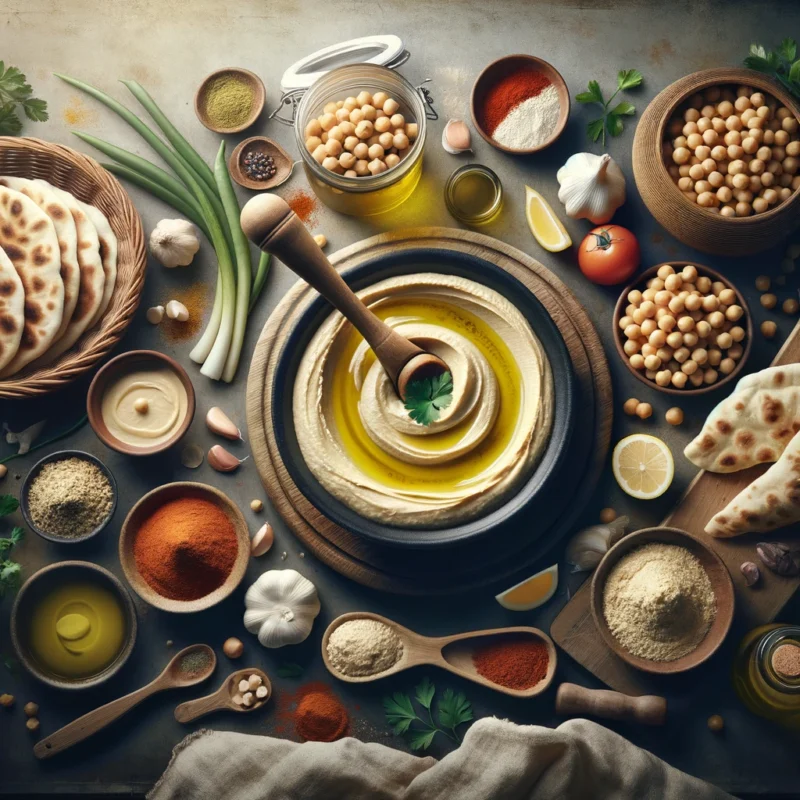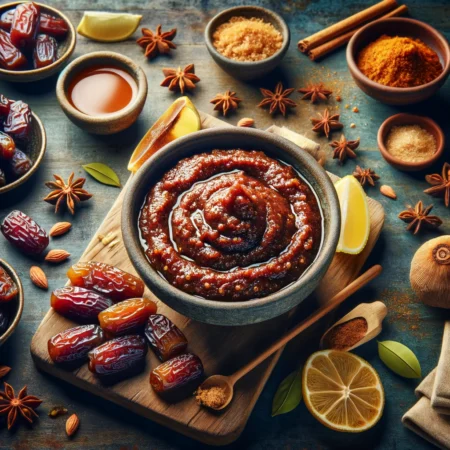In the heart of the Middle East, where culinary traditions weave through the fabric of daily life, binding the past with the present, there exists a dish emblematic of Jordanian hospitality and the region’s rich gastronomic heritage—Hummus. This creamy, savory spread has transcended its origins to become a global favorite, but it is within the context of Jordanian cuisine that Hummus truly shines, embodying the simplicity, elegance, and depth of flavor characteristic of the country’s culinary ethos.
Jordanian Hummus is more than just a blend of chickpeas, tahini, lemon, and garlic; it is a culinary masterpiece that speaks to the soul of Jordanian culture. The journey of Hummus begins with the humble chickpea, soaked overnight and then boiled until tender, a process that transforms these modest legumes into the smooth, velvety base of the dish.
To these chickpeas, tahini is added—a sesame paste that introduces a rich, nutty flavor, balancing the earthiness of the chickpeas with its creamy texture and slight bitterness. The addition of fresh lemon juice injects a vibrant acidity into the mix, cutting through the richness and brightening the overall flavor profile. Garlic, crushed into a fine paste with a pinch of salt, offers a warm, aromatic depth that complements the other ingredients, while a generous drizzle of high-quality olive oil not only enhances the smoothness of the Hummus but also adds a layer of complexity with its fruity, peppery notes.
But the art of making Jordanian Hummus does not end with its ingredients; it lies in the meticulous preparation and presentation. The Hummus is carefully blended to achieve a perfect consistency—neither too thick nor too runny—resulting in a creamy, indulgent spread that invites the diner to dip, spread, and savor. It is often garnished with a sprinkle of paprika or sumac, a few whole chickpeas, a handful of chopped parsley, and an extra drizzle of olive oil, transforming the dish into a visual as well as a culinary delight.
Served as part of a mezze platter, alongside warm flatbread, pickled vegetables, and other dips, Jordanian Hummus is a testament to the communal nature of dining in the region. It is more than just food; it is an experience, a gesture of welcome, and a symbol of generosity and shared joy.
As Hummus has traveled beyond the borders of Jordan and the Middle East, it has been embraced and adapted by cultures around the world, each version reflecting the tastes and traditions of its new home. Yet, the Jordanian Hummus remains a timeless classic, a reminder of the power of simple ingredients to create a dish that is both nourishing and evocative.
Today, as we enjoy the rich, smooth flavors of Jordanian Hummus, let us remember the history and culture that it represents. It is a dish that connects us to the land, to tradition, and to each other, inviting us to gather around the table and share in the universal language of food. So, the next time you dip into a bowl of Jordanian Hummus, take a moment to appreciate the journey of this extraordinary dish, from the fields of Jordan to the heart of a global culinary tradition.
Jordanian Hummus
Ingredients
1 can (15 oz) chickpeas, drained and rinsed
1/3 cup tahini
1/4 cup lemon juice
2 cloves garlic, minced
2 tablespoons olive oil
Salt and paprika to taste
Directions
In a food processor, combine the drained and rinsed chickpeas, tahini, lemon juice, minced garlic, and olive oil.
Blend the ingredients until smooth, scraping down the sides of the food processor as needed to ensure everything is well incorporated.
Taste the hummus and season with salt to your liking. Adjust the consistency by adding a little water if needed to achieve your desired texture.
Transfer the hummus to a serving bowl or plate, smoothing the surface with the back of a spoon.
Garnish the hummus with a sprinkle of paprika and a drizzle of olive oil.
Serve the hummus with warm pita bread, fresh vegetables, or crackers for dipping.





